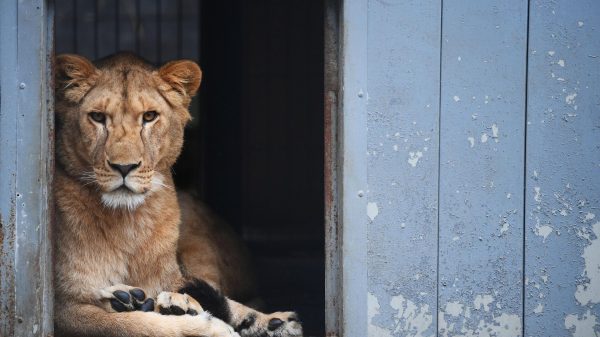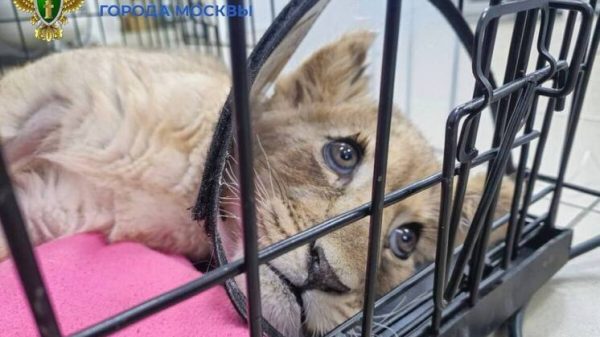Baby Grace lies quietly in the clinical ward under the watchful gaze of her mother, Rose Mapeka. Her parched skin, which hangs off her tiny body, and the milkiness of her eyes, show only too clearly that the 18-month-old is undernourished.
Grace is lucky to be alive. Health workers in Kuwadzana, a high-density suburb in Zimbabwe’s capital, Harare, identified her as needing immediate hospital treatment for malnutrition during their home visits to the city’s nursing mothers.
“It breaks my heart to see my baby lying there helplessly and I cannot do anything to help. I pray the nurses will revive her somehow,” Mapeka says. “If it were not for the health workers who came right on time, we could have lost her.”
Graceis now too weak to play. She is always crying, her mother says.
Acute malnutrition cases are on the rise in Zimbabwe, as food shortages continue to take their toll. Statistics show that one in three children in Zimbabwe suffers from malnutrition.
A Zimbabwe Vulnerability Assessment (ZimVac) report shows that the percentage of children receiving the minimum acceptable diet necessary for growth and development declined from 6.9% in 2019 to 2.1% in 2020.
Matabeleland, in the south-west of the country, has the highest cases of global acute malnutrition, with an estimated 74,267 children under the age of five affected, including at least 38,425 with severe acute malnutrition.
Because of the coronavirus lockdown, Mapeka, a vendor, has not been able to properly feed herself or her child. Surviving on a meal a day, supplemented with maheu, a cheap sorghum drink, Mapeka has not been able to produce enough milk for her child.
Even though Grace now eats solid foods, it lacks sufficient nutrients for baby growth.
Grace’s father left last year to look for work in South Africa and Mapeka has not heard from him since.
We hardly have enough to eat. I cannot produce enough milk also because I am always hungry
Rose Mapeka
“We hardly have enough to eat. I cannot produce enough milk also because I am always hungry. She is surviving on mealie-meal porridge and sorghum drink, which basically give the same nutrients,” Mapeka says during a visit to Kuwadzana Polyclinic.
“When the lockdown started in March, I knew life would change, things are tough, having two meals per day is a luxury. Sometimes, I only look for food for my baby and go hungry.”
Across from Grace’s bed, another child is crying uncontrollably as nurses take turns to try to calm him down.
Glen is two and also suffering from malnutrition, and has been under the care of nurses for the past five days. While the nurses are happy with his steady progress, Glen has developed irregular eating patterns and is always hungry.
‘We are drinking sewage water’: Zimbabwe shortages threaten thousands
Read more
“The feeding programme will take more time to show results because he was malnourished and his mother took time to bring him here,” a nurse says. “We are glad that the supplements we give him have all [the] nutrients and he should be able to start playing soon.”
His mother, Mutsa Mapfumo, 32, says Glen cannot play and is always sleeping.
“I started getting worried when he could no longer eat the normal daily portions. I felt I needed help. Although I felt it was somewhat late to bring him here, I am delighted by his progress,” Mapfumo says.
A nurse says the number of children being admitted to the clinic has risen sharply during lockdown, with many families unable to provide food with enough nutrients. Many of the children lack iron, and health workers give them vitamin supplements during treatment.
I started getting worried when he could no longer eat the normal daily portions. I felt I needed help
Mutsa Mapfumo
The declining situation in Zimbabwe, with both prolonged drought and the coronavirus lockdown, is now characterised by high stunting rates, and maternal and child mortality.
UN agencies have in the past called upon the government to prioritise children in drought response programmes.
ZimVac’s national nutrition survey recommended that malnutrition be considered a development priority after levels of stunted growth in children were recorded at 29.4%.
ZimVac says there is real concern around infant and young child malnutrition. Only 19% of women of childbearing age ate a diet that met the minimum nutritional limit this year, down from 43% in 2019. This has led to high maternal death rates, according to humanitarian agencies.
As the food crisis worsens in Zimbabwe, the World Food Programme (WFP) has been providing food supplements for malnourished children.
Last week, however, the WFP Zimbabwe director, Francesca Erdelmann, announced that the UN agency is facing a funding gap. “For our portfolio in Zimbabwe between now and the next six months we are short by about $204m [£152m]. These are not amounts of money that are easy to mobilise, and for most of our donors, it’s tough for them too,” Erdelmann said.
“So we really have to try and make sure that we can reach our targets and deliver the support to the people. But if we can’t, we are going to have to make some tough choices and target only the most vulnerable groups.”
By the end of 2020, projections indicate that the number of hungry Zimbabweans will have risen by almost 50% to 8.6 million.




















































Свежие комментарии